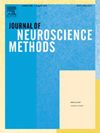
《神經(jīng)科學(xué)雜志》上發(fā)表研究論文方法和數(shù)量有限的廣泛和重要評論處理新方法或認可的重要發(fā)展方法,用于研究組織和精細結(jié)構(gòu),生物化學(xué)、分子生物學(xué)、組織和細胞化學(xué),生理學(xué)、生物物理學(xué)和藥理學(xué)的受體,神經(jīng)元、突觸、神經(jīng)膠質(zhì)細胞,人的神經(jīng)系統(tǒng),脊椎動物和無脊椎動物,或適用于臨床及行為科學(xué)、組織培養(yǎng)、神經(jīng)通訊、生物控制論或電腦軟件。雖然文章應(yīng)該寫得足夠詳細,以使其他人能夠驗證這些方法,但它們也應(yīng)該為廣大的科學(xué)讀者所理解。此外,該雜志還將以可拍照的格式出版信件,其中包括對該雜志或任何其他專門研究神經(jīng)科學(xué)的雜志中所述方法的評論或討論。文章應(yīng)提交給總編。發(fā)表在《神經(jīng)科學(xué)方法雜志》上的一篇論文意味著它不會在其他地方發(fā)表。
The Journal of Neuroscience Methods publishes research papers and a limited number of broad and critical reviews dealing with new methods or significant developments of recognised methods, used to investigate the organisation and fine structure, biochemistry, molecular biology, histo- and cytochemistry, physiology, biophysics and pharmacology of receptors, neurones, synapses, and glial cells, in the nervous system of man, vertebrates and invertebrates, or applicable to the clinical and behavioural sciences, tissue culture, neurocommunications, biocybernetics or computer software. Although articles should be written in sufficient detail to allow others to verify these methods, they should also be intelligible to a broad scientific audience. In addition, the journal will publish letters in a camera-ready format containing comments or discussion of methodology described in this journal, or any other journal devoted to the neurosciences. Articles should be submitted to the Editor-in-Chief. Submission of a paper to the Journal of Neuroscience Methods implies that it is not being submitted for publication elsewhere.
SCI熱門推薦期刊 >
SCI常見問題 >
職稱論文常見問題 >
EI常見問題 >